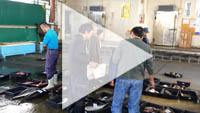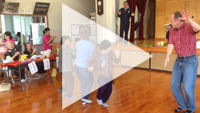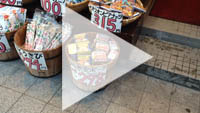
Longevity villages of Okinawa, Japan Life is fleeting. It moves at a very fast pace for most of us. We are reminded to enjoy the moments that make up our days, take care of ourselves, eat right and stay active. Yet this is something that we struggle with here in the west. We recently traveled to the Far East, Okinawa, Japan roughly 7,000 miles away, to discover how the people here live so long and so well dating back to the 6th century. We spoke with the people, visited a couple of villages and interviewed Dr. Craig Wilcox the author of “The Okinawa Program” as well as “The Okinawa Diet.” Okinawa was identified by David Buettner as one of the five “Blue Zones” in the world. Individuals in the “Blue Zones” live on average longer and healthier than anywhere in the world. Here is a link to the Blue Zones webpage describing Okinawa. http://www.bluezones.com/live-longer/education/expeditions/okinawa-japan/ Accompanied by Co-Executive Producer Tom Rau, his wife Sue, and our expert guide Tamio Ota we traveled to Kunigami Village (first and met a wonderful elderly couple. They have been together for nearly 70 years, the wife is 88 and her husband is 93. With the help of Tamio translating we spoke with the couple about their lives together. Their secret was really simple; they stayed busy their entire lives. In fact, they are still working to this day making Japanese lunchboxes. While we were there they were working on an order for a 100 the following week. Our next stop was the following day at Ogimi Village. Here we documented a monthly birthday celebration for the women of the village. The guests averaged age was around 90 and they celebrated the birthday’s of five women. As the women arrived a local hospital medical team checked their vitals. This is done at this time because all of the women are in one place at the same time. It is important to note that these women very few forms of medications, maybe just something for blood pressure and that’s about it. Most take none at all. Thanks to their diet and lifestyles they are amazingly healthy. Once this has been completed the celebration commences. There is tea served, food and the women are treated to various performances for the younger women of the village and the children as well. The party took a very lively turn once a local police officer finished a presentation about street safety. To put this briefly, he passed out a handout showing situations that they women may find themselves walking around the village and how to share the road with vehicles. These women are all around 90 and above. Do you think that this would happen in America? Probably not. This is a testament to how healthy they are. Now after this presentation, the officer took to the stage and performed a few songs with his sanshin and the help of another musician. One of the women got up and started to dance and was soon followed by others. Tom and Sue were both escorted to the dance floor and they began to learn some traditional Okinawan dance moves. This lasted about 10 to 15 minutes until most of the women took their turn dancing. This was without a doubt one of the highlights of the visit. At the conclusion of the party the women exited the village building and returned to their homes. Some walked, some rode bikes. None of them took a car. We didn’t leave right away; instead we went with a 95 year-old young-lady back to her home to interview her. The long walk to her residence really put into perspective just how much walking these villagers do on a daily basis. Visiting friends and family in the village is routine here. On her way home she stopped by to say hello to her older sister who was unable to attend the celebration because she wasn’t feeling one hundred percent. She is 103, nearly 104. She showed us her garden-farm alongside of her home and some of the vegetables she had growing. She said that there really wasn’t a lot in there now and for us that was difficult to believe. In her very humble traditional Okinawan home she shared with us facts about her long life. Amazingly to us she has been a widow for 68 years with her husband dying during World War II. She lived in the village throughout the war and raised her children there. This was a remarkable interview and we were not only fortunate enough to speak with her but to have Tamio with us to translate the fascinating conversation. Meeting and filming with Dr. Craig Wilcox helped put all of this into perspective. The author of both, “The Okinawa Plan” and “The Okinawa Diet,” he was able to shed light and details on what we had seen the past few days. He spends a great deal of time in the villages and is well aware of their daily lives, eating habits, and overall zest for life. He has found himself engaged in dancing at a birthday celebration as well. During or interview he described the importance of a balanced diet with a variety of colors. The Okinawans consume lots of fish, a wide range of vegetables in particular purple sweet potatoes, a wide variety of sea vegetables such as sea grapes, and are astonishingly active. It was a privilege to meet with him for the “Embrace of Aging” series. Our stay in Okinawa was based in the city of Naha, the capital of Okinawa. Our hotel was the luxurious Rihga Royal Gran http://www.rihgaroyalgran-okinawa.co.jp/en/. While here were able to meet with the chef and he prepared some very special dishes for us to try. Needless to say they were amazing. The breakfast and dinner buffets had a wide assortment of selections as well including various Okinawan specialties. Here you are able to get a feel for the Okinawan diet. We thoroughly enjoyed our stay at one of the finest hotels that Okinawa has to offer. We met our guide Tamio Ota at the hotel and he took us around the city and gave us a very detailed account as to the local customs, food, greetings and more. One location that stood out was the local fish market. If you have never been to any kind of Asian market before it is quite the experience. In this particular one in Okinawa as soon as we entered we were greeted by the smell of fresh fish and it was not like what you would expect. It was pleasant. The fish direct from the Pacific and East China Sea was bountiful in quantity and colorful. Various fish, mollusks, crustaceans and sea vegetables could be found everywhere you looked. Tom picked up a few lobsters that he said had “a good weight” to them. You wouldn’t believe the size of what was there unless you have witnessed first hand yourself. Aside of the fish market we ventured into the city for some of the traditional market shopping. Walking into what seemed like a wide ally way there were shops lining up and down either side. One could find virtually anything from sweets, to jewelry, clothes, alcohol, toys and more. Each store was an adventure. Inside this monstrous market was what could only be described as a cross between a grocery store and farmers market. We walked and sampled some fresh goods. We meant an elderly woman who has been working there for over 60 years selling fresh scallions. They were delicious. Another elderly couple had us try garlic wrapped in some kind of seaweed and it was unlike anything that we have ever tasted before. On another morning we found ourselves at a local fish auction. These fresh fish were from that very mornings catch and people from the surrounding villages, both residents and restaurant owners, came together to bid for the catch. In another area of the building we were able to film with some Okinawan women as they worked cleaning fresh mahi-mahi. Eating in a foreign country can be tricky unless you either speak the language fluently or have a guide with you for interpretation. Tamio was a lifesaver here. He helped explain the menus in the smaller Okinawan restaurants, which would be nearly impossible for a tourist to recognize as a restaurant by the way. The best part about dining in Okinawa is that all of the food is grown locally and it is all amazingly fresh. Fish, pork, vegetables are all deliciously combined in traditional dishes. It is hard to have a bad meal here. There are a number of historical locations in Naha as well. One that we visited was Shurjio Castle http://oki-park.jp/shurijo-park/english/. This historic site is a symbol of the vast history of this region. Most of the castle was greatly damaged during WWII and has since been reconstructed to its former glory. A very special thank you for the beautiful Righa Royal Gran Hotel, the Okinawa Convention and Visitors Bureau, the people of Kunigami and Ogimi villages, and of course or spectacular guide Tamio Ota. Our time spent here will serve as an important part in “The Embrace of Aging: the female perspective of growing old.” |
|
(scroll down for photos)
|
Rihga Royal Gran Okinawa Hotel in Naha
Naha Market
Shurjio Castle
95-year old
Birthday Celebration
Fish Auction
Married Couple
Dr. Wilcox
|
||











